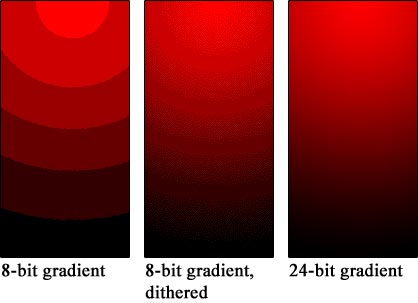8 Bit vs.10 Bit Video – What’s the Difference?
An 8-bit file works with RGB using 256 levels per channel. Meanwhile, 10-bit jumps up to 1,024 levels per channel. Therefore, a 10-bit image can display up to 1.07 billion colors, but an 8-bit photo can only display 16.7 million. Can your eyes tell the difference?
I’m old enough to remember when everything was analogue. I also remember all the analogue vs digital arguments: which produces the better sound, Vinyl or CD? Some said vinyl was warmer while others prefered the clarity of audio from CDs (no scratches, no turntable speed issues etc).
Then there were those who said that with analogue systems you always get the full audio spectrum. With digital you need to cheat because digital systems can’t hold the same amount of information. A top range analogue system will always beat a top range digital system, even for clarity.
But we can’t all afford top range systems. So a $200 CD player and amp will beat a $200 turntable and amp and it’s just more convenient. Then mp3s came along and the whole argument started again.
Digital vs Digital
A CD contains more digital information than an mp3 so it sounds better. Yes, but have you tried jogging while listening to music from a portable CD player? Besides, I can get 1000s of mp3s in my tiny iPod and share them with millions of people online. And so on…
For mp3s to work, they had to develop a way to cheat the human ear. This is because (in the days of dial-up internet) they needed mp3 files to be very small. Therefore, they had to find a way to remove a huge chunk of digital information.
Compared to a WAV file, an mp3 can be up to a 10th of the size. This meant mp3 developers had to remove 90% of the information from the audio and STILL have it sound almost as good. How is this possible?
Basically, it removes frequencies from the audio that your brain doesn’t miss too much. Remember how newspaper photos were (I guess still are) made up from millions of little dots? The human brain is designed to see shapes in things so, if the dots are small enough, we just see the image and ignore the dots.
How big are your channels?
So the difference between 8 bit and 10 bit video is one of levels per channel. Like with the dots in the image above, the more of them there are the less you notice the dots. Ultimately, it’s about the amount of digital information contained within a file.
Both formats have to remove information from the image to fit it into a digital file. But 8 bit video removes a lot more information than 10 bit. While this doesn’t matter too much for casual videography, it’s more important when you are putting the file through other processes.
Filmmakers (and other creatives) will tell you they would rather start with as much information as possible, then compress it later. because as it happens most video is viewed in an 8 bit format (HD TV for example).
Banding
If you’ve watched any streamed digital video you will have seen a thing called “banding”. This is when that removed information from the colour spectrum becomes more visible. For example, a sunset will have rings around it showing the sudden change in colour and tone rather than a smooth gradation from light to dark.

When you capture the shot in 8 bit video it will look fine. But banding can become more visible when you try to adjust 8 bit video in post production. For example, if you try to adjust the contrast or boost the detail in the shadows.
Therefore, it’s better to edit, grade and apply effects in 10 bit and then master in a more compressed format like 8 bit.
10 Bit Video on Smartphones
The best smartphones cameras for video still mostly record in 8 bit. In fact, they can record in 10 bit but I’m pretty sure the files delivered are all 8 bit files. I have read of users able to pull 10 bit video from their iPhones using iOS 10, for example, but since iOS 11 have had this possibility removed.
Digital video quality is a complicated subject, if you include other variables such as bitrates and resolutions such as 4K and the rumoured 8K video possibly a feature for the new Samsung S11. But I think it’s worth having some understanding of what’s going on. Especially as phone makers will use these numbers to sell you their new models.
Eager to learn more?
Join our weekly newsletter featuring inspiring stories, no-budget filmmaking tips and comprehensive equipment reviews to help you turn your film projects into reality!
Simon Horrocks
Simon Horrocks is a screenwriter & filmmaker. His debut feature THIRD CONTACT was shot on a consumer camcorder and premiered at the BFI IMAX in 2013. His shot-on-smartphones sci-fi series SILENT EYE featured on Amazon Prime. He now runs a popular Patreon page which offers online courses for beginners, customised tips and more: www.patreon.com/SilentEye


